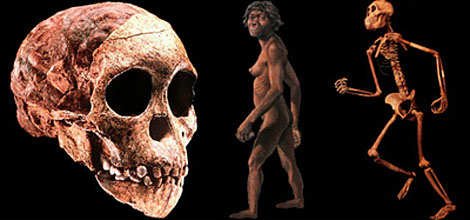 |
The Physical Characteristics of Humans
- Page 23 -
 |
Retardation of Maturation
Related to our retention of juvenile features into adulthood is our "retarded" pattern of development. Human beings take longer to mature and are dependent upon their parents longer than the offspring of any other species.
Chimps are sexually mature at five; the bones in their skulls fuse at about the same age, and at that point they cease to be able to learn new things easily. Humans mature sexually on average at about 12 to 14 years of age; the bones in our skulls fuse at about age 16; and we continue learning throughout life. As long as we remain healthy, we do not lose the capacity to learn new things, even whole new systems of thought. In addition, it is difficult to say when we become independent from our parents.
Our “retarded” development is probably related to the general increase in the brain size of our ancestors over time. Brain size could not increase indefinitely, obviously, without fatal consequences for the developing fetus during childbirth. Big-brained infants obviously have difficulty getting born. The limiting factor is the size of the adult female pelvis, which could not increase indefinitely without impairing the female's mobility. The "design compromise" that evolved was a dramatic slowing down of the growth of the brain prior to birth. In evolutionary terms, the increasing size of our brains as adults could then be accommodated by the simple device of postponing that growth until after the infant was safely born. However, this adaptation caused the whole pattern of human growth, and not just development of the fetal brain, to slow down.
This extended developmental pattern is genetic, and it has had enormous consequences in its effects on human culture.